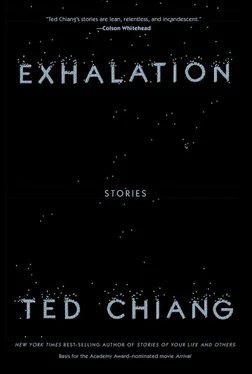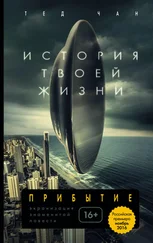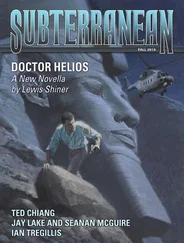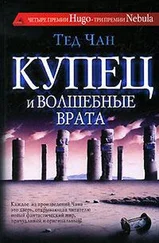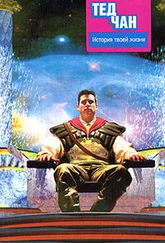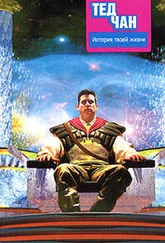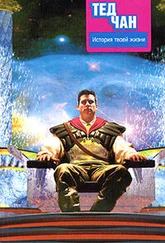I had a light supper in the hotel restaurant and then proceeded to the theater. It was by far the biggest audience I’ve had for one of my lectures; men and women crowded the hall like puffins on a beach. I knew better than to imagine the turnout was a reflection of my popularity; the name “Dorothea Morrell” on a poster has never been a major draw. They came because the Atacama mummies are being sent on a fund-raising tour around the country, and their first stop is here in Chicagou. Archaeology is on everyone’s mind right now, and I was incidentally benefiting from that. But that was fine with me; I was happy to have such a large audience, no matter what the reason.
I began my lecture by discussing the growth rings of a tree trunk, and how the thickness of each ring depends on the rainfall during that year of the tree’s growth, so that a succession of narrow rings indicated a period of drought. I explained that by counting back from the year a tree was felled, we can compile a chronology of weather patterns going back many decades, beyond the memory of any person living. The past has left its traces on the world, and we only have to know how to read them.
Then I described the technique of cross-dating: matching the pattern of growth rings across different trees. I offered an example where we see an identical sequence of thick and thin rings in two pieces of wood: in one case it’s near the center of a recently felled tree, whereas in another it’s near the perimeter of a piece of timber found in an old building. We know those trees’ life spans overlapped; the former was a sapling when the latter was mature, but they experienced the same sequence of abundant and scarce rain. We can use the growth rings in the older tree to extend our record of weather patterns further into the past. Thanks to cross-dating, we’re no longer limited to the life span of any individual tree.
I told the audience that archaeologists have examined the timbers from older and older buildings, matching the patterns of growth rings along the way. Even without the benefit of written records, we knew that the timbers in the top of Trier Cathedral in Germany came from trees cut in the year 1074, while those in the base came from trees cut in 1042, by examining the growth rings they contained. And it didn’t stop there, I told them; there were even older timbers we could use, like the pilings in the Roman bridge at Cologne and the beams that reinforced ancient salt mines at Bad Nauheim. Every timber served as a volume in a history written by nature itself, an almanac of yearly rainfall reaching back to the birth of Christ.
Then I told them that going back further was trickier. It meant finding tree trunks preserved in bogs, beams excavated from archaeological digs, even large pieces of charcoal found in the firepits of cave dwellers. I explained that it was like assembling a jigsaw puzzle; sometimes we found many pieces that fit with one another, but we didn’t know where they belonged until we found the piece that connected them to our main chronology. Over time we filled in the gaps, until our unbroken record of growth rings became five thousand years long, then seven thousand years. I told them how thrilling it was to examine a piece of wood and know that the tree it came from was felled eight thousand years before the present.
But even that thrill can’t compare to that inspired by examining samples of wood a few centuries older. Because in those tree trunks, there’s a point at which the growth rings stop. Counting back from the present, the oldest growth ring was formed eight thousand nine hundred and twelve years ago. There are no growth rings before that, I told them, because that is the year you created the world, Lord. In the center of every tree of that era is a circle of perfectly clear and homogeneous wood, and the diameter of that ringless area indicates the size of the tree at the moment of creation. Those are primordial trees, created directly by your hand rather than grown from seedlings.
I told them that the absence of growth rings in these tree sections is just as significant as the absence of navels in the Atacama mummies. In fact, the tree sections tell us things that the human remains, skeletal or mummified, do not. Without the growth-ring chronology, we would have no way of knowing when those primordial humans appeared; their bodies tell us that humanity was created all over the world, but the tree sections tell us exactly when it happened.
Then I told them that, while trees without growth rings and men without navels are wondrous and surprising, they are also logically necessary. To help them understand why, I asked them to consider the alternative. What would it mean, Lord, if you had created primordial trees with growth rings all the way to their centers? It would mean that you had created evidence of summers and winters that never took place. That would be a deception, no different than if you had given a primordial man a scar on his brow as a remnant of an injury suffered during a childhood he never experienced. And to support that fabricated memory, you would have to create the graves of the parents who raised the man during his fictitious childhood. Those parents would surely have mentioned their own parents, so you would have to create graves for the grandparents as well, Lord. In order to be consistent, you would fill the ground with the bones of countless generations past, so many that no matter how deeply we dig, every spadeful of soil we turn would disturb the grave of an ancestor. The Earth would be nothing except a boneyard of infinite extent.
Obviously, I said, that’s not the world we live in. The world we see around us cannot be infinitely old, so it must have had a beginning, and it’s only logical that when we look closely enough, we discover confirmation of that beginning. Trees without growth rings and men without navels attest to our reasoning. But more than that, I told them, they provide us with spiritual reassurance.
I asked them to imagine what it would be like if we lived in a world where, no matter how deeply we dug, we kept finding traces of an earlier era of the world. I asked them to imagine being confronted with proof of a past extending so far back that the numbers lost all meaning: a hundred thousand years, a million years, ten million years. Then I asked, wouldn’t they feel lost, like a castaway adrift on an ocean of time? The only sane response would be despair.
I told them that we are not so adrift. We have dropped an anchor and struck bottom; we can be certain that the shoreline is close by, even if we can’t see it. We know that you made this universe with a purpose in mind; we know that a harbor awaits. I told them that our means of navigation is scientific inquiry. And, I said, this is why I am a scientist: because I wish to discover your purpose for us, Lord.
They applauded when I had finished speaking, and I admit that I took pleasure from that. Forgive me for my pride, Lord. Help me to remember that all the work I do—whether it is excavating bones in the desert or giving lectures to the public—is not for my own glory, but for yours. Let me never forget that my task is to show others the beauty of your works and in doing so bring them closer to you.
Amen.
· · ·
Lord, I place myself in your presence, and ask you to shine your light into my heart as I look back upon this day, so that I may see more clearly your grace in everything that has happened.
Today was filled with reminders of your majesty, for which I am grateful, but it has also troubled me. It began with the breakfast I had with cousin Rosemary and her husband, Alfred. I don’t see Rosemary very often, but I always enjoy the time we spend together. Thank you, Lord, for giving me at least one relative who thinks archaeology is a suitable profession for a woman, and who does not ask me when I’m going to marry or have children.
Читать дальше
